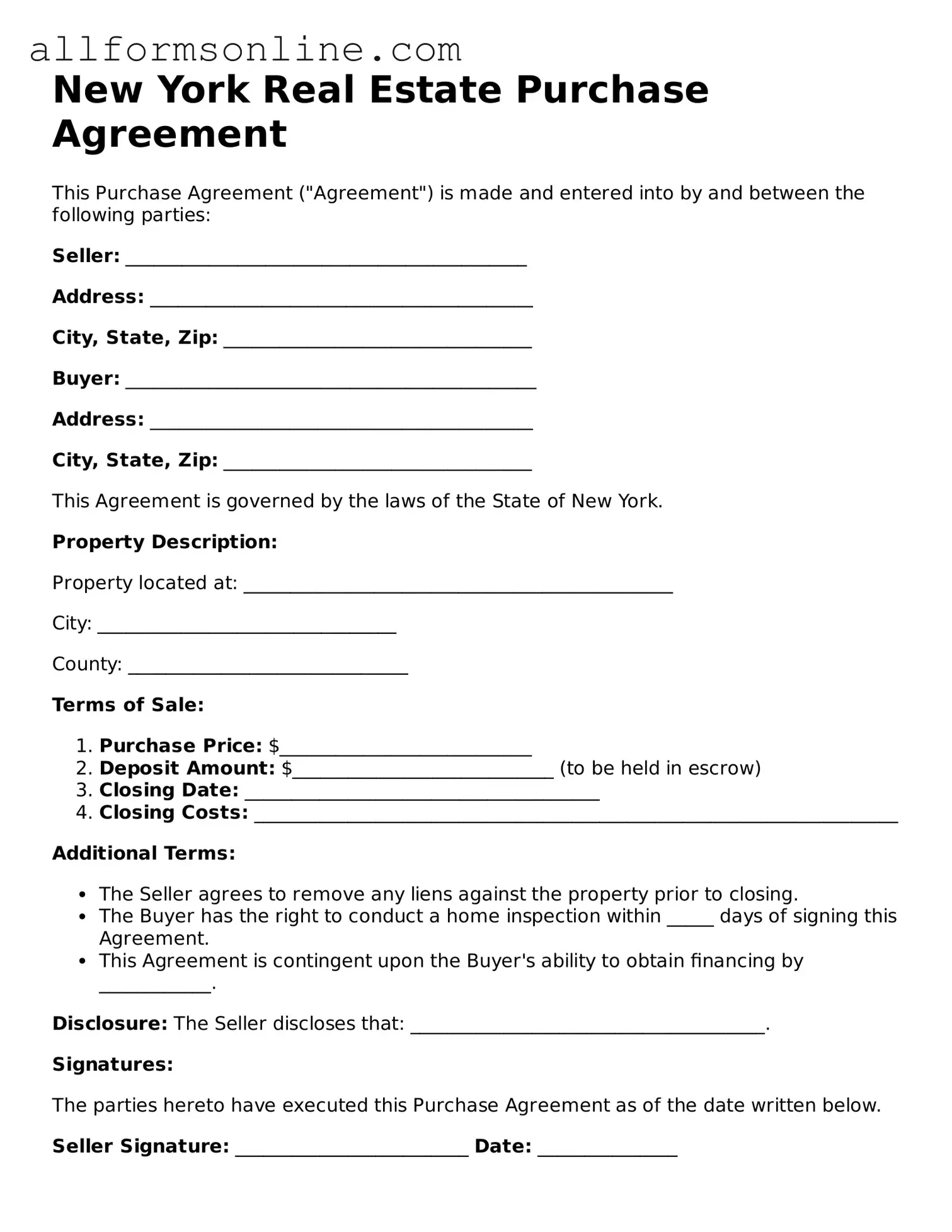What is a New York Real Estate Purchase Agreement?
A New York Real Estate Purchase Agreement is a legally binding document that outlines the terms and conditions of a property sale. It includes details about the buyer, seller, property description, purchase price, and any contingencies that may apply. This agreement serves as a formal contract between the parties involved in the transaction.
What information is typically included in the agreement?
The agreement generally includes the names of the buyer and seller, the property's address, the purchase price, and the closing date. Additionally, it may outline any contingencies, such as financing or inspections, and specify who is responsible for closing costs and other fees associated with the transaction.
Is the Real Estate Purchase Agreement required in New York?
While it is not legally required to have a written agreement for a real estate transaction, it is highly recommended. A written purchase agreement protects both parties by clearly stating the terms of the sale and minimizing misunderstandings. Without it, verbal agreements may lead to disputes.
Can the terms of the agreement be negotiated?
Yes, the terms of the agreement can and often are negotiated. Buyers and sellers may discuss various aspects, such as the purchase price, closing date, and any contingencies. It’s important that both parties come to a mutual understanding before signing the agreement.
What happens if one party does not fulfill their obligations?
If one party fails to meet their obligations as outlined in the agreement, it could be considered a breach of contract. The non-breaching party may have the right to seek remedies, which could include financial compensation or, in some cases, specific performance, meaning they can compel the other party to fulfill their obligations under the agreement.
How can I ensure my interests are protected in the agreement?
To protect your interests, it is advisable to work with a real estate attorney or a qualified real estate agent. They can help you understand the terms of the agreement and negotiate on your behalf. Additionally, ensure that all verbal agreements are documented in writing within the purchase agreement.
What is the typical timeline for completing a Real Estate Purchase Agreement?
The timeline can vary depending on the specifics of the transaction. Typically, once an agreement is signed, the buyer will conduct inspections and secure financing. This process can take anywhere from a few weeks to a couple of months. The closing usually occurs after all contingencies have been satisfied.
Where can I obtain a New York Real Estate Purchase Agreement form?
You can obtain a New York Real Estate Purchase Agreement form from various sources, including real estate agents, legal websites, or local real estate boards. It is crucial to ensure that the form you use complies with New York state laws and regulations.
